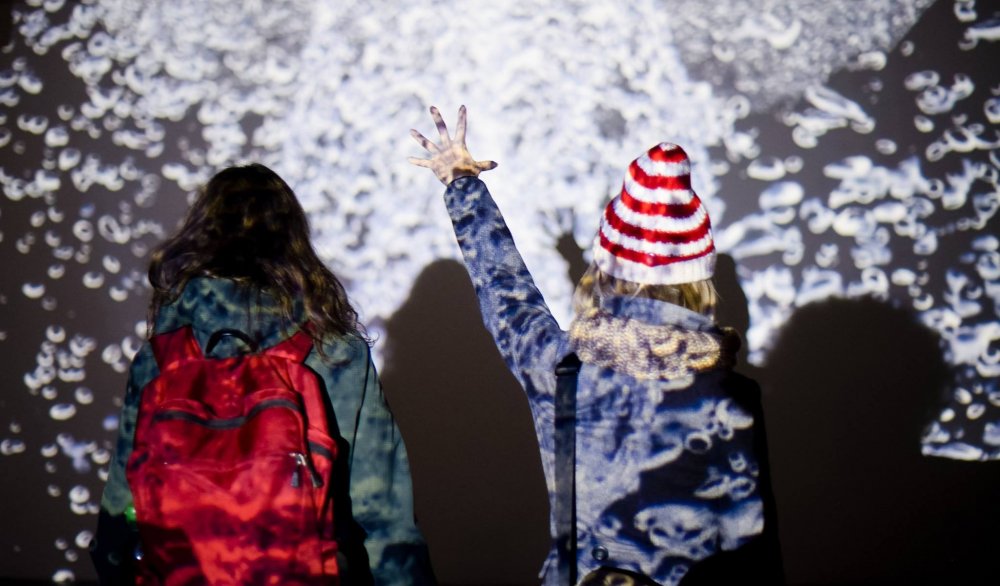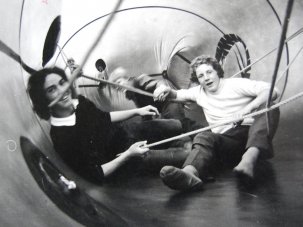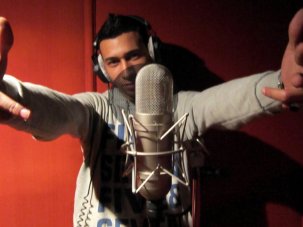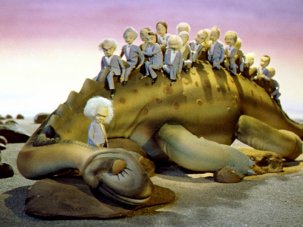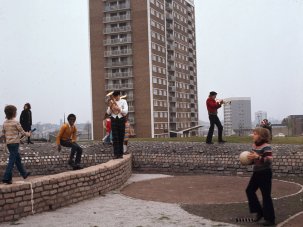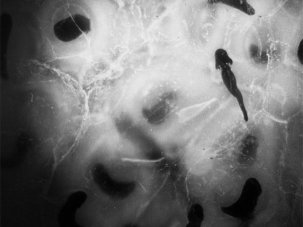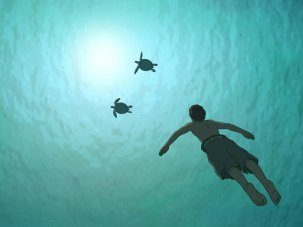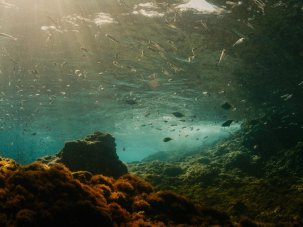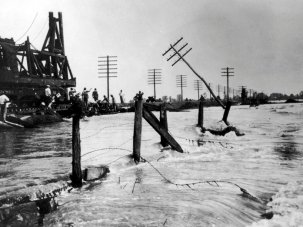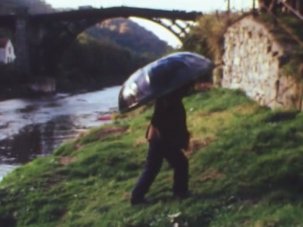During her performance piece History History History, which screened on the Thursday night of this year’s Flatpack Festival, moving image artist Deborah Pearson projected onto a fast-fold screen a photograph of a crowd of protesters, some of the 200,000 said to have marched during the Hungarian uprising of 1956. Pearson took up a magnifying glass – modelled on a placard held by a male protester in the picture – and held it over faces in the crowd for moments at a time.
The 11th Flatpack Film Festival ran 4-9 April 2017 in venues around Birmingham, UK.
Not altogether differently, Flatpack magnifies the endeavours of its collaborative partners, drawing attention every April (and, increasingly, throughout the year) to the city’s cultural institutions and community arts organisations. This year’s line-up – comprising, as usual, film, live music and VR events, talks and tours – complemented an exhibition of the work of Jean Painlevé at Birmingham’s Ikon gallery, and directed pass-holders to an in-progress project by Friction Arts, a cooperative working to memorialise the city’s wholesale market, which is due to be demolished in August.
Flatpack’s amplification of what Birmingham has to offer extends to its geography. The festival hub is rarely to be found in the same place twice. Instead, it moves around the city, and was located this year in a disused retail space in the city centre, facing the entrance to Debenhams. (The year before, by contrast, it was ensconced in the imposing Birmingham Museum and Art Gallery on Chamberlain Square.)
Indeed, few of Flatpack’s venues are purpose-built for public screening, but – like a hermit crab – the festival borrows and makes a home of available buildings, varying in size, shape, structural integrity, cultural valence and fitness for film exhibition. Flatpack began life above the Rainbow pub in Digbeth; Southside was the focus of its 11th iteration.
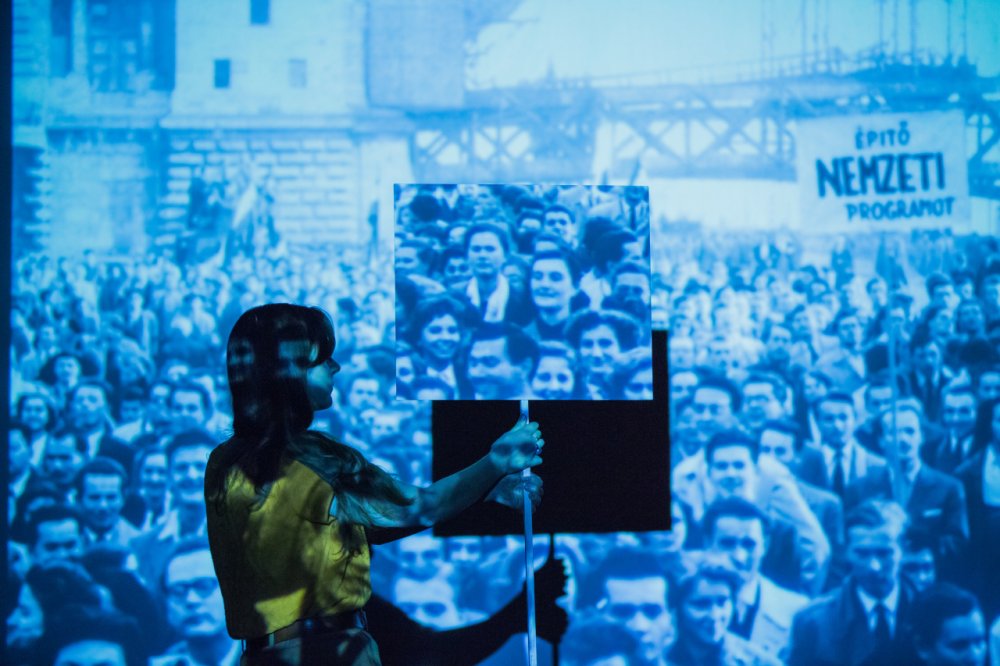
Deborah Pearson's History History History
History History History made for a good beginning to my three days at Flatpack, its critique of the organisation of history into a teleological chain of events (“this happened, and then this happened”) proving hard to cast off. Devised in partnership with comedian Daniel Kitson and live artist Tania El Khoury, History is a roving and inventive presentation of the series of quirks, the twists and turns (the sudden amputation of an actor’s career; the overthrow of an uprising) that had a hand in Pearson’s birth in Canada, and her being in Birmingham on the evening of 6 April 2017.
The performance piece used for a scaffold an ill-fated Hungarian film of great personal and cultural significance; the 1956 football satire, starring Pearson’s grandfather, was screened in its entirety, with Pearson timing her interjections to fit within the film’s compass and eclipse its less essential passages. These ellipses gave the audience a jumbled understanding of the film’s plot, but this was deliberate: unable to speak Hungarian, Pearson depended for many years on her mother’s offhand translations of the film’s dialogue, an exercise of which, she admits, she would tire quickly as a child.
History History History trailer
For the younger Pearson, the film came to comprehend both the story in the film (conceived by its screenwriter Tibor Méray) and the story of the film: what its non-release and censorship augured for her family. History is a reenactment of this simultaneity, with Pearson applying a variety of audio commentaries to the film and a rainbow-range of colour-coded subtitles, signposting now her mother’s translations, now a conversation between Pearson and her grandmother, now the sentiments that her younger self fancied the actors to be voicing.
Pearson’s polyvocal History was delivered from the rostrum of the Old Rep Theatre, whose plush formality counterpointed the disassembling temper of the piece. The auditorium came into its own when Pearson told of the Corvin Cinema in Budapest, where the 1956 Hungarian film would have had its premiere had activists not picked the circular building for a stronghold.
Some shells are better than others. Some are eye-catching but impractical, and Flatpack’s occupation of the Grade II-listed Roundhouse foundered for this reason. A horseshoe-shaped building dating to 1874, the Roundhouse is scheduled for restoration by the National Trust and the Canal and River Trust.
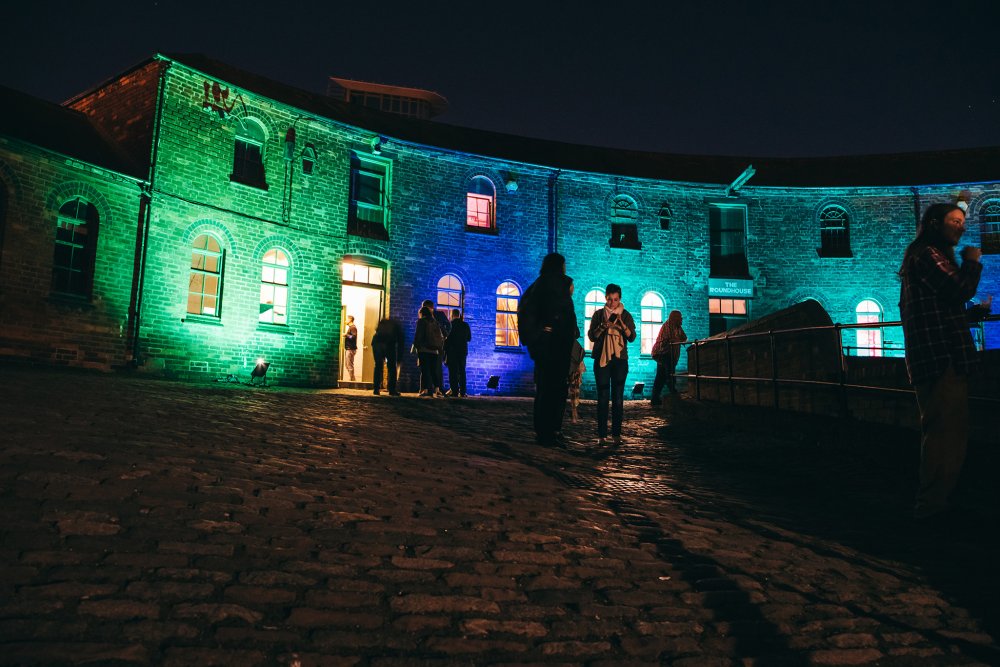
Birmingham’s Roundhouse, hosting Flatpack 2017’s In the Cut exhibition
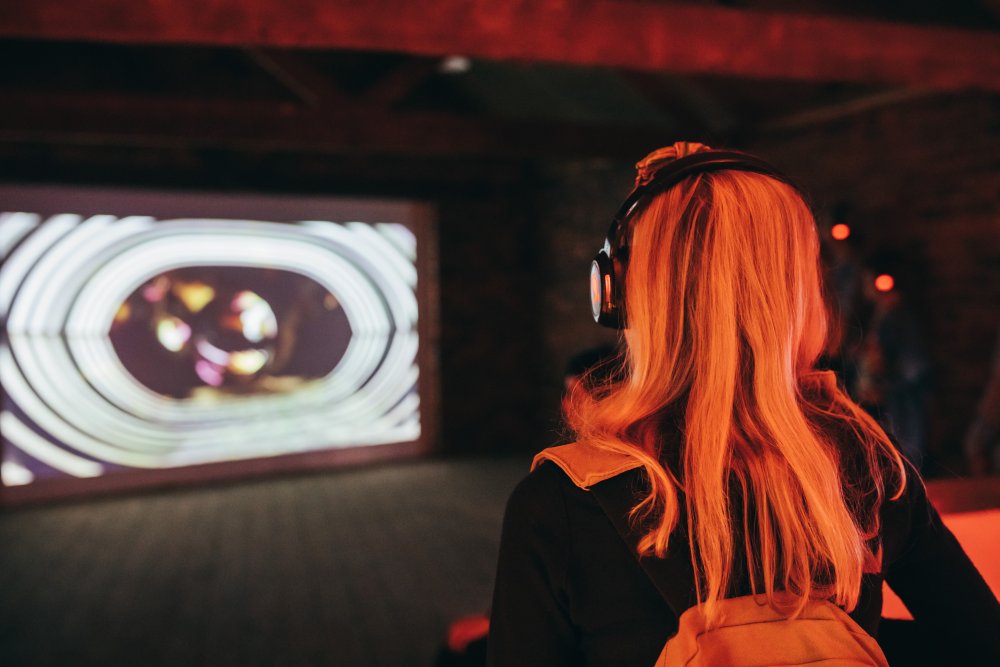
Watching Patrick Goddard’s Free Radicals in the Birmingham Roundhouse
The renewal can’t come soon enough; its two-floor interior is dank and funky. The eight-or-so exhibits it hosted on the Saturday were new films on the subject of water. They included Duncan Poulton’s video-collage Jetsam, a logjam of samples of “computer-generated simulations of water”; Patrick Goddard’s Free Radicals, with its seeming perpetual waterslide ride; and Sophie Michael’s The Watershow Extravaganza, a recording of a way-out attraction at Watermouth Castle theme park, operative since the 80s and wedding the entertainment value of a 1951 fountain show with a 1920s musical organ.
Preserving a dinosaur-form of diversion, provoking thoughts of duration and re-purposing, The Watershow Extravaganza was the best suited of all the exhibits to their setting, which has itself fulfilled multiple functions since its construction (stables, stores, offices) and is shortly to become a monument to itself. The event as whole, however, lacked cohesion, and the space was not used to its full potential. Online magazine Electric Sheep described Flatpack as being like “the perfect mixtape”. In the Cut, as the event was named, was a mixtape within a mixtape; discontinuity too far.
An extract from Patrick Goddard’s Free Radicals
An extract from Duncan Poulton’s Jetsam
In the Cut was among the last in a series of canal-related events to take place on the Saturday, which Flatpack billed Gongoozling Day. To gongoozle is to leisurely watch the passage of boats from a canal bank, or to observe things idly. Its meaning brings to mind a passage from an essay by Jean Painlevé, Feet in the Water. Painlevé – the current subject at the Ikon – describes the “ecstasy” of “wading around in water up to your ankles or navel… getting hypnotised by a sinister pond where everything seems to promise marvels although nothing lives there”.
Painlevé and Gongoozling Day donated to two overlapping concerns of this year’s Flatpack: amateur natural history, and the life aquatic. The second of these was timely, given the impending release of The Odyssey, a drama about Jacques Cousteau, fêted oceanographer and co-inventor of the Aqua-Lung. A screening of Michaël Dudok de Wit’s riveting animation The Red Turtle capped the life aquatic theme, exploring man’s rapport with water and the natural world. The amateur-naturalist theme, meanwhile, seemed apposite for a festival whose name enshrines its DIY beginnings, and was communicated by a pair of events: Nature’s Dance: Painlevé Live and Minute Bodies: The Intimate World of F. Percy Smith.
Held in great esteem by his contemporaries Man Ray and Sergei Eisenstein, Painlevé was an artist with a passion for marine life. A precursor to Cousteau, his films – such as the 14-minute L’Hippocampe (1934), about seahorse physiology – were produced with waterproofed camera equipment of his own improvising, and made use of extreme close-ups, enabling the viewer to pore over the behaviours of seldom-seen undersea organisms.
Among the photographs on display at the Ikon is Lobster Claw. This claw – being (apparently) detached from the body of the lobster – looks like a laughing face, an impression created by the image’s being enclosed, “tightly framed in the vertical format used for portraits”, clarifies Marie Jager in the exhibition catalogue. “Painlevé renamed his photograph Lobster Claw or De Gaulle,” she writes, “after realising the uncanny resemblance with the iconic French political figure.”
This was typical of Painlevé, who was receptive to resemblances, and worked them into his work. One of the three films screened with live musical accompaniment on the last day of the festival, Acera or the Witches’ Dance (1972), is another instance of Painlevé welcoming likenesses into his art.
In the case of Acera, the filmmaker has a point; its molluscs appear to be dancing. Their skirts look like lily pads, having a radial notch, and there’s something of the jellyfish in their uneconomic propulsions. Then again, they look like so many Loie Fullers performing the Danse Serpentine, as captured by the Lumière Brothers in 1897.
The urge to compare catches on. Either that or it’s hard to avoid. As Pearson’s piece challenged the commonplace reduction of history to a list, engagement with Painlevé’s films and photographs exposes the temptation to analogise natural history, to relate it to other worlds. Does it matter that Painlevé anthropomorphised? Does it hurt the instructional value of this work? Perhaps the practice of likening is to the contemplation of nature what the timeline is to the contemplation of history. Both are a kind of vulgarisation; both assist understanding.
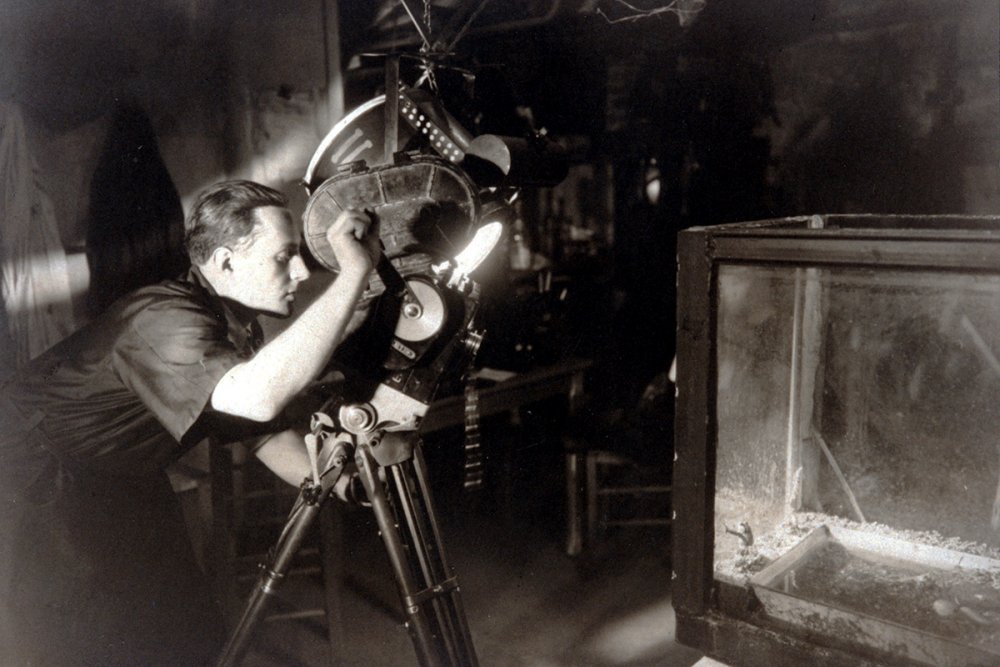
Jean Painlevé at work
A screening of Minute Bodies, which showcased the work of English naturalist filmmaker F. Percy Smith, raised similar questions. Excerpting sequences from Smith’s educational films, Minute Bodies merges footage of frogspawn, plant life and protozoa, disdaining title cards and commentary.
The film is directed by Tindersticks frontman Stuart Staples, and Tindersticks, assisted by Christine Ott and Thomas Belhom, composed its imaginative score. Staples’s co-editor David Reeve introduced the screening, and shared that their aim in making the film was to “demonstrate Smith’s artistic qualities”, his “talent as a photographer”, a statement that should have prepared me for the film’s preferment of less straightforwardly identifiable images over the flies and spiders that also sat for his camera.
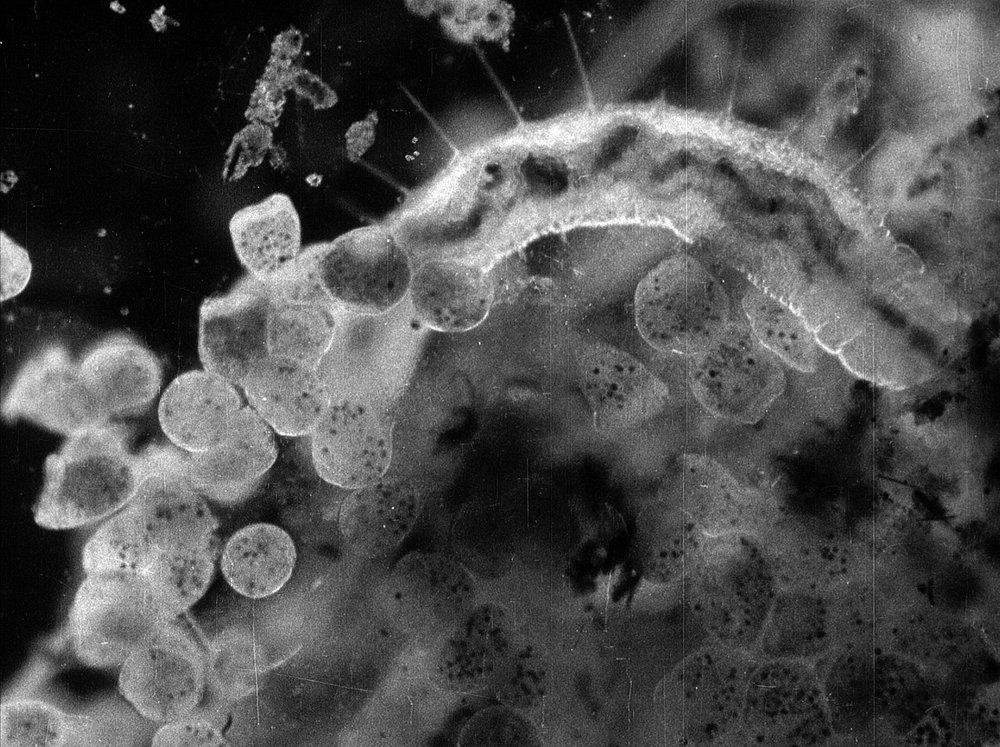
Minute Bodies: The World of F Percy Smith (2016)
Smith’s microcinematography actuates in the viewer the same relativising impulse that Painlevé folded into his work. His films put on show such things as semifluid bricks and wet webbing, like caul fat, only of liquid mercury. Time-lapse photography reveals the growth of a shoot; the nodding sprout is a snake charmed from a basket. The impulse to liken is not, in this case, in the work, but begins with the viewer.
Smith’s producers were eager that his films reach a wide audience, and the commentaries that accompanied the original films confirm that intention. One wonders whether that intention isn’t voided by the tack that Staples has taken; by the new film’s favouring what could be mistaken for non-representational imagery, and by its being, like The Red Turtle, non-verbal.
By fragmenting Smith’s work, removing the titles and combining images from different films, Staples reinstates the foreignness, the strangeness of, for instance, pin mould; makes again arcane biological processes and protoplasmic activity. Does Staples, then, return the subjects of Smith’s appeasing portraiture to scientists in their laboratories, to the specialist from whom Smith had tried to wrest them? The man-animal antagonism that Smith had hoped to moderate, Staples risks restoring.
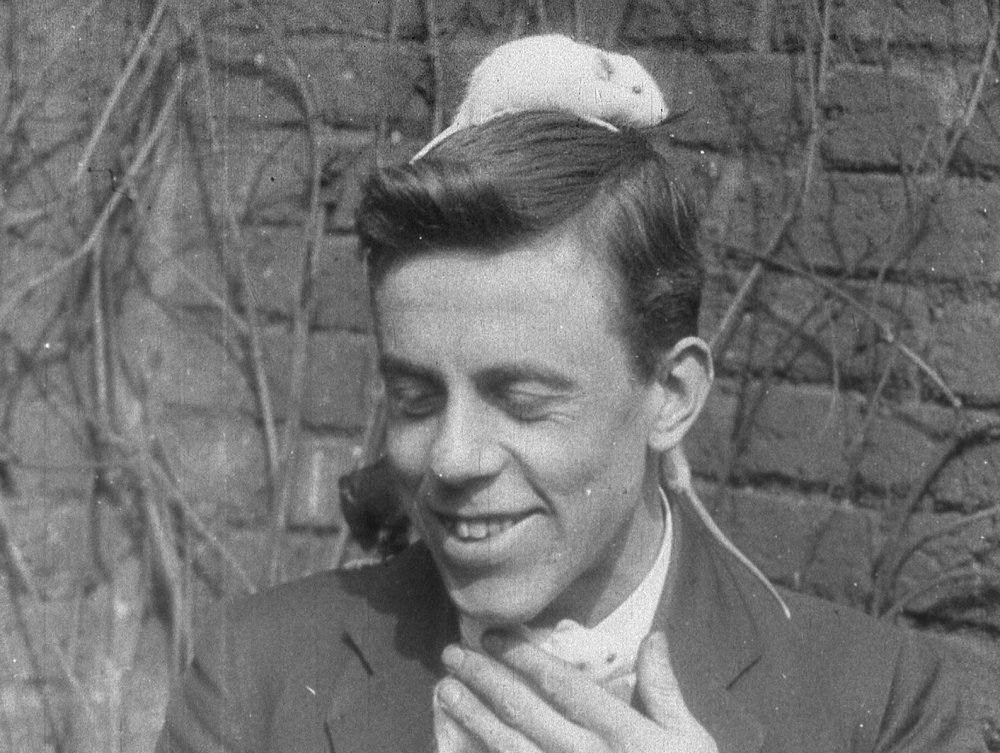
Portrait of the artist as rat-stand: F. Percy Smith depicted in the coda to Minute Bodies: The Intimate World of F. Percy Smith (2016)
The viewer of Minute Bodies gets a brief glimpse of the naturalist filmmaker: a medium-shot coda showing a young Smith – who has a kind and appealing face – standing in a garden with rats moving over his head and shoulders. He smiles; a real St. Francis! In the shot preceding, an ant spars with Smith’s fingertip.
These concluding images do two things. Their playfulness first impales the account of Smith tendered by the film so far: its impression of a man bonded to the eyepiece of his microscope, an indoors-man, humourless, taken with the seriousness of his work. In the second place, they make patent the feeling that informed the filmmaker’s work. These brief encounters encapsulate the conciliatory mood of Smith’s films, their promotion of custodianship, and their request that gentleness and clemency inform man’s transactions with the natural world.
That coda suggests another film (a biopic, maybe), but this is not the film that Staples set out to make. All the same, this soundless postscript – portrait of the artist as rat-stand – seemed to me to articulate a prevailing concern of this year’s Flatpack. Synopsising The Red Turtle in a post-screening Q&A, Dudok de Wit asked: “Who are you really, really, when you’re alone in nature?”
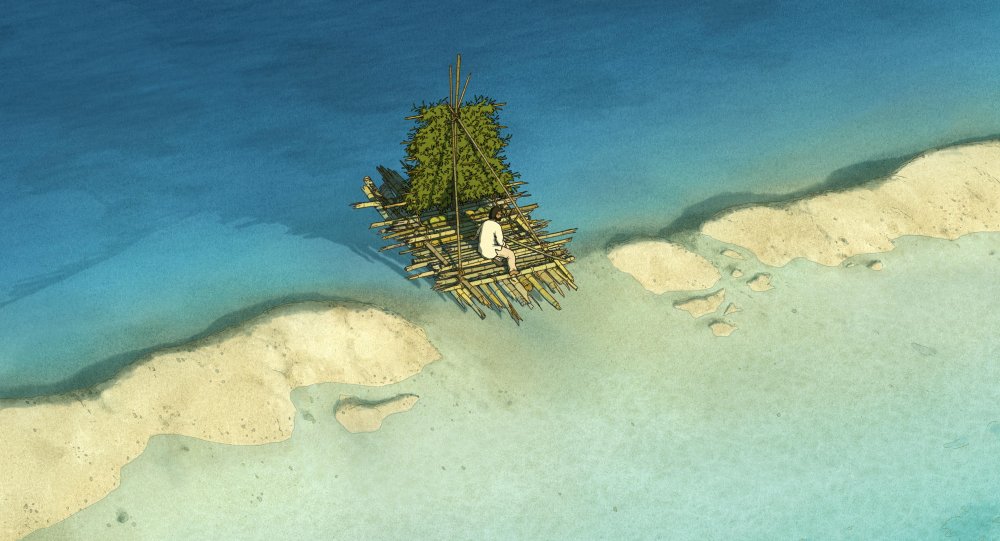
The Red Turtle (2016)
-
The Digital Edition and Archive quick link
Log in here to your digital edition and archive subscription, take a look at the packages on offer and buy a subscription.




